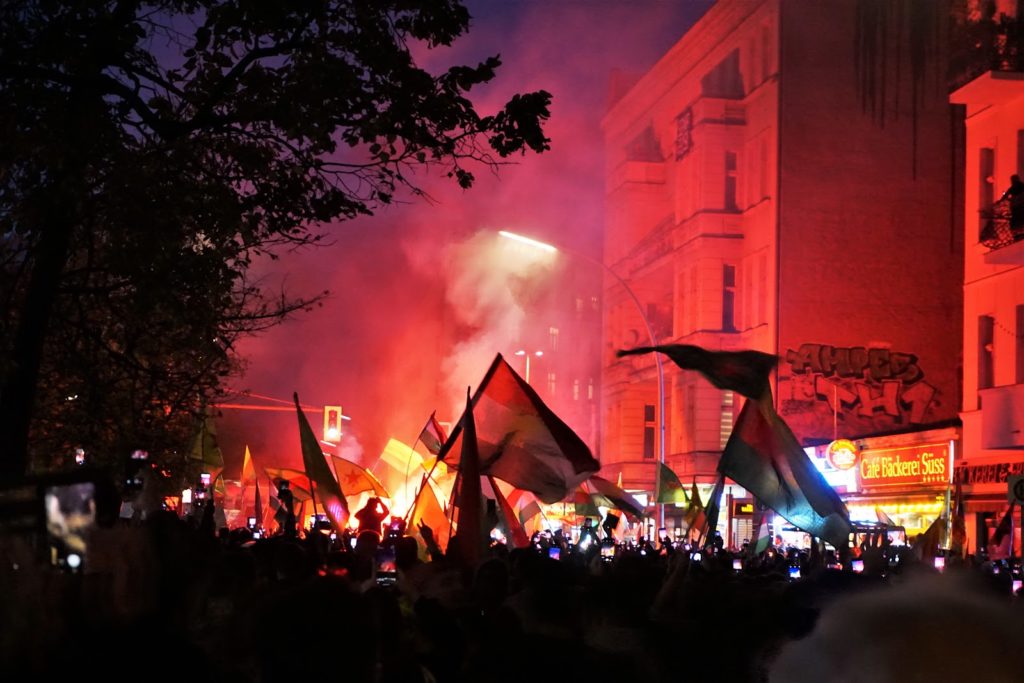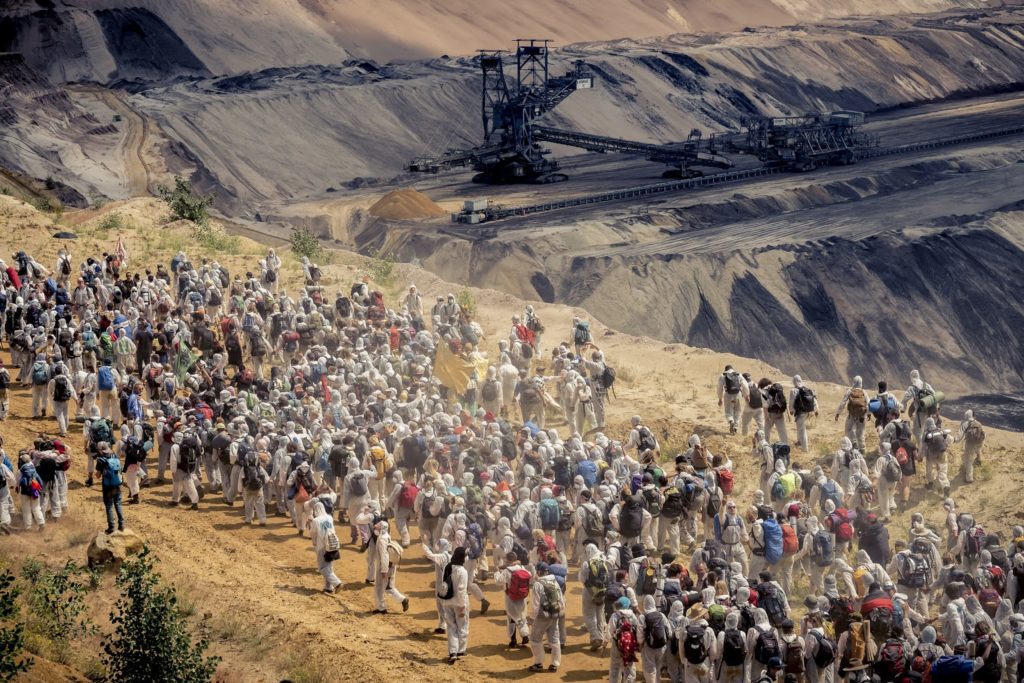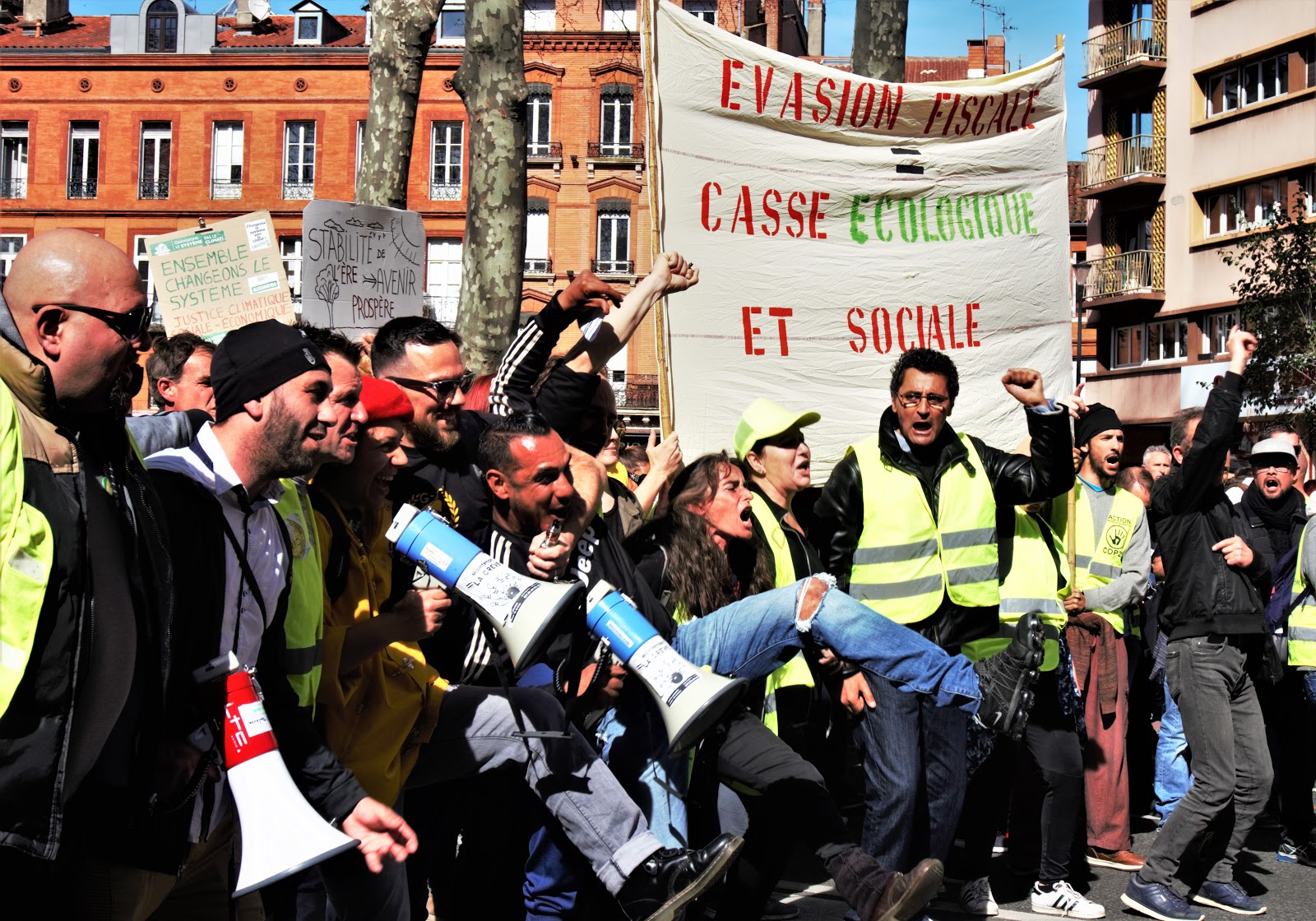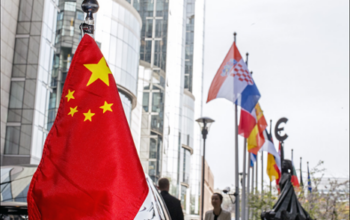Much like any other polytheistic society, the Ancient Greeks had a god.dess for just about any important aspect of their lives. One of them was Adrestia, the goddess of revolt, just retribution and balance between good and evil. Her name translates to “the inescapable”, and if we look at history social conflict and revolts are indeed a recurring theme – from the French Revolution and Gandhi’s Salt March to the Monday Demonstrations that helped bring down the Berlin Wall. More recent waves of protests, including Occupy Wall Street, the growing environmental movement and social justice movements from Lebanon over France to Chile, demonstrate that revolt and protests are still as inescapable as a means to bring about social and political change as it seemed to be in Ancient Greece.
Cathartic protest
First and foremost, protests are a form of opposition against an actual, planned or feared course of action. As such it can be “an end in itself”, a form of catharsis that resolves social tensions, and citizens’ frustration and discontent. Protest marches, rallies and vigils have a function as sign of objection, they are a means of communicating to the authorities the discontent or wish for change of the population, or at least a part of it. As such they also offer a platform to blow off steam, to voice anger, fear and hope, to start a conversation with people who share the same opinion, or who oppose it. Catharsis in protest can come through songs and shouts, to chance encounters with fellow protesters, or merely the knowledge to have been part of it, to have done something about the issue at hand.

Especially when protest alone does not lead to change, however, it becomes necessary to channel its cathartic energy into the development of new strategies and finding solutions and alternatives to the present condition. As philosopher Auguste Comte put it, “nothing really essential and enduring can be accomplished in the practical fold when its theoretical implications are not clearly worked out, or are at least well on the way to solution.”
“We must be able to […] propose alternatives”
In France, the organisers of the Vrai Débat are trying to capture the energy and ideas of the Gilets jaunes movement. As a reaction to Macron’s grand débat, they collected ideas and comments online on issues people consider important, followed by a series of deliberative assemblies in several cities throughout the country starting in mid-June 2019. “They allow us to combine democracy with social movement”, says participant Anthony Brault. “You prioritise and think together, we will create a political programme that will not replace the Gilets jaunes but can be useful for them.” During the assemblies between 15 and 40 people work on the most popular propositions for two days. They are divided by topic and small working groups analyse them to sum up the most frequent ideas and arguments in a concise document. “We must be able to exchange ideas”, explains another participant, Daniel, “to propose alternatives.”
In a similar manner climate camps aim at providing a platform for discussion, networking and exploring alternatives. One of these climate camps takes place every year in the Rhineland, Germany where there are three coal pits and five power plants that together are responsible for a third of Germany’s carbon dioxide emissions. The Klimacamp im Rheinland combines Ende Gelände’s civil disobedience actions against coal mining with trying out “tomorrow’s society – social, ecological and based on grassroots democracy”. Cultural programmes as well as courses, workshops, panel discussions on topics “from theoretical analysis of climate change to practical stuff like building a windmill” are organised, and the camp is structured based on anti-authoritarian self-organisation.

Climate of change
In the same region the Hambach Forest is located, an ancient forest that was supposed to be cut down to expand a coal mine, and even though the forest is now supposed to remain it’s future is still not guaranteed as water that sustains the trees needs to be pumped out of the ground to prevent the flooding of the coal pits. There, environmental activists are combining protest with the development of alternative ways of living and organising society in a similar, yet more permanent, way as the climate camps. To prevent the destruction of the forest, the activists began to occupy the forest in 2012. They built tree houses to make eviction more difficult, and on a meadow nearby a communal kitchen, a building for assemblies, a library and a museum was set up.
780 kilometres away, the ZAD (zone to defend) of Notre-Dame-des-Landes (ZAD NDDL) that began as an occupation to prevent the destruction of 1650 hector of agricultural land and wetland for the construction of an airport has become a social project of an alternative form of structuring collective life, a vision of what society could look like. This shift of the ZAD as a means of protest and resistance to an end in itself has resulted in the Zadists’ refusal to leave the area even when the airport project was abandoned by the government in 2018. Over the course of its existence since 2000, the ZAD NDDL has become a political space “in which social and ecological experiments take place” within a framework of “self-governance, egalitarian sharing of tasks, hospitality, gratuity, and work without hierarchical subordination”.
“A different world is possible”
In an interview published on mediapart’s participative blog, activist and Gilet jaune Geneviève Legay said: “We must think of utopia as something attainable. Otherwise I would not continue to fight, if I thought it wasn’t possible. And if people hadn’t fought for utopias, we wouldn’t have the rights we have today. […] a different world is possible, it is necessary to build it together.” The same is emphasised by writer, director and environmental activist Cyril Dion. To bring about change we need NGOs and Zadists, civil disobedience and guerilla gardening as well as social entrepreneurs and novelists.
To increase the likelihood that “the inescapable” revolt results in the envisaged change and does not end with its first cathartic infant steps, a common effective strategy is necessary. Thus, in the beginning, according to Dion, is a set of questions that need to be answered: “Can we hope to find solutions within our democracies or not? Must the strategy to stop the destruction and the warming [of the planet] be political, citizen-based or both? Can it be done without using violence?”
by Merle Emrich
Photo Credits
Gilets jaunes Toulouse, Merle Emrich (All Rights Reserved)
Berlin protest, Merle Emrich (All Rights Reserved)
Ende Gelaende 20119, Besetzung nder RWE Strukturen im rheinischen Braunkohlerevier: Der Goldene Finger bricht aus der Fridays for Future Demonstration bei Hochneukirch aus und stürmt über die Kante in den Tagebau Garzweiler. Alle Bagger werden abgeschalte, David Klammer, CC BY-NC 2.0










